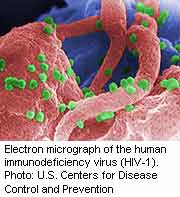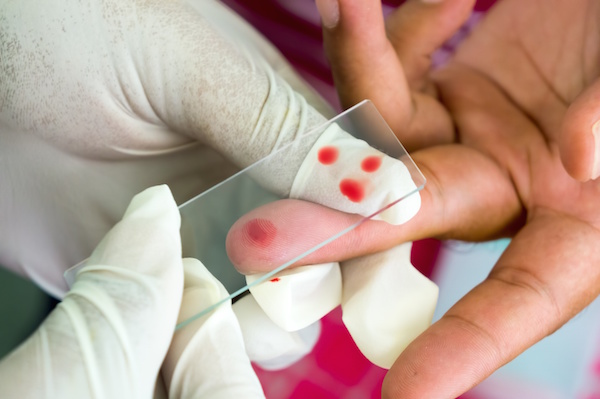
MONDAY, April 18 (HealthDay News) — New research suggests that HIV-infected patients are most likely to stay clear of AIDS longer if they start drug therapy when their immune systems are still relatively strong.
However, starting treatment earlier, compared to waiting, didn’t affect dying from AIDS.
“There wasn’t a clear benefit in terms of preventing death” by prescribing the drugs before some guidelines suggest, said Dr. Keith Henry, director of HIV clinical research at Hennepin County Medical Center in Minneapolis and co-author of a commentary accompanying the study, published in the April 19 edition of Annals of Internal Medicine.
The issue of when to begin drug treatment is a hot topic in the field of AIDS/HIV medicine. If physicians wait to begin treatment, patients can delay the expense — not to mention the side effects — of pricey anti-HIV drugs. But such delays may also give the virus a chance to become more powerful and better able to fend off medications.
If they’re not treated with drugs, HIV-infected people almost always go on to develop AIDS.
So when should doctors turn to the drugs? In the U.S., guidelines suggest that HIV-infected patients take them when the level of CD4 cells — an important part of the immune system — dips below 0.500 X 109 cells per liter (cells/L). In Europe, the guideline number is frequently lower — meaning a weaker immune system — at under 0.350 X 109 cells/L.
In the new study, researchers examined how patients did when they began drug therapy with their CD4 cells at a variety of levels.
The study authors examined the medical records of almost 21,000 HIV-infected patients who sought treatment in HIV clinics in Europe and through the Veterans Health Administration system in the United States. The researchers found that the death rate was about the same regardless of whether patients began treatment when their CD4 levels dipped under 0.500 X 109 cells/L or if they waited until their immune systems deteriorated more and reached below the level of 0.350 X 109 cells/L.
However, the risk of death did rise when patients weren’t treated until their CD4 cells fell to an even lower level: 0.200 X 109 cells/L.
Patients were better able to stave off AIDS itself when they began treatment when their immune systems were stronger — when they dipped below 0.500 X 109 cells/L.
In other words, starting treatment early — when levels dip below 0.500 X 109 cells/L — didn’t seem to help patients live longer compared to starting it a bit later. But it did appear to keep AIDS from developing as quickly.
What to do?
“To fully benefit from early initiation, patients must present for medical care while their CD4 cell counts are still above 500 cells,” said study lead author Lauren Cain, a research fellow at Harvard School of Public Health.
There are other issues to consider, added Henry, the commentary co-author. When it comes to available money for HIV/AIDS treatment, “the U.S. is actually a resource-poor country,” Henry said, which makes it difficult to say that patients should always get the HIV drugs early. “You have to make some decisions about who you treat. In a perfect world maybe everybody should be treated. But guess what? It’s not a perfect world,” he added.
And in far too many cases, he said, “the decision is already made” — patients don’t go to get treated until it’s too late to begin early therapy, anyway. That’s because the levels of immune cells in their bodies have already dwindled too far.
More information
There’s more on HIV/AIDS at the U.S. National Library of Medicine.

